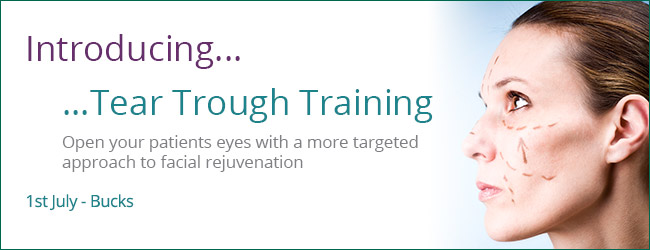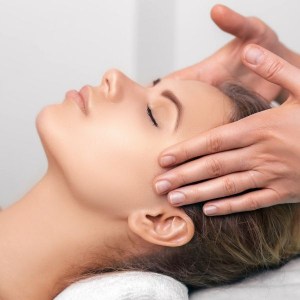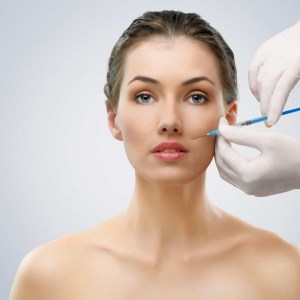
Cosmetic Courses are delighted to announce our brand new peri-orbital training course, otherwise known as Tear Trough Training!
What is a Tear Trough deformity?
Tear trough deformity is diagnosed by a sunken appearance that results in the casting of a dark shadow over the lower eyelid, sometimes giving a fatigued appearance even if recommended amount of sleep is achieved. Dark circles can also be present, however there are other factors that need to be taken into consideration when these are first noticed. Changes in the skins thickness, laxity and hyperpigmentation can also play a role in creating dark circles.
Tear troughs can also be described as a depression centred over the medial inferior orbital rim and bounded by the infraorbital protuberance. As people age, infraorbital fat starts to displace anteriorly, and is more commonly known as ‘eyebags’. This bulge can become deeper over time, and become more pronounced due to loss of soft tissue and osseous support.
What treatments are available?
The peri-orbital area is one that many individuals are concerned about and would like to be treated, but it is also one of the most challenging. Traditional techniques for treating the tear trough area have been removing the skin, muscle and fat surgically, as well as skin rejuvenation treatments such as chemical peels for those that wish to not go down a surgical route. In recent years, non-surgical volumising treatments such as dermal fillers and botulinum toxin have been introduced to restore the volume rather than remove it. This treatment is less invasive than having surgery with instant results and minimal downtime for the patient, and with a 150% mark-up per patient for clinics, the earning potential speaks volumes! One of the techniques used would be injecting dermal fillers using a cannula, a safer and more controlled way to treat this intricate and delicate area.
What are the benefits of tear trough training?
• There is a high client demand for this treatment as the peri-orbital region is the focal point of the face
• This advanced treatment will keep you way ahead of the competition
• With a potential 150% mark-up per patient, the earning potential is huge
Why attend training with Cosmetic Courses?
With 13 years of experience in medical aesthetic training for registered Doctors, Dentists and Nurses, there are numerous reasons why you should complete your peri-orbital training with us:
• Our training in this treatment focuses on the entire peri-orbital region, not just the tear trough, making it a unique course to others
• We offer a small ratio of delegates to trainers to ensure you build up the confidence to go straight out and practice
• All models and resources are provided by us making it a completely hassle-free training day
• We offer a balance of theoretical and practical hands-on teaching to ensure a complete understanding of the techniques are learned
Our next tear trough training day is on Wednesday 1st July 2015 at the Paddocks BMI Hospital in Buckinghamshire. If you would like to receive any more information about the course, please call 01844 390110 or email our course co-coordinators, [email protected] to book your place now.
For a more in depth discussion on Dermal filler treatments for Tear Trough Deformity, please click here for the Journal of Cutaneous and Aesthetic Surgery.
 According to new dermatology studies, there is a new method that uses a combination of soft dermal fillers and tissue tightening techniques that can practically rub out your wrinkles and renew old skin.
According to new dermatology studies, there is a new method that uses a combination of soft dermal fillers and tissue tightening techniques that can practically rub out your wrinkles and renew old skin. ranging from wrinkles to the loss of subcutaneous fat and dermal collagen with
ranging from wrinkles to the loss of subcutaneous fat and dermal collagen with 






